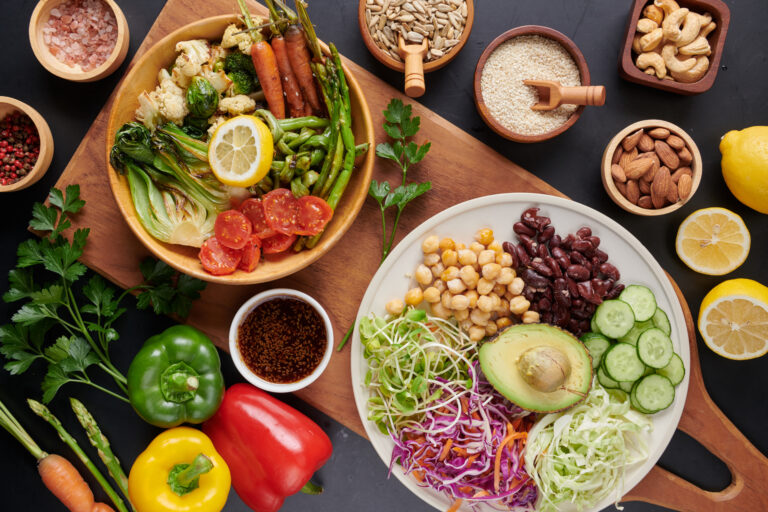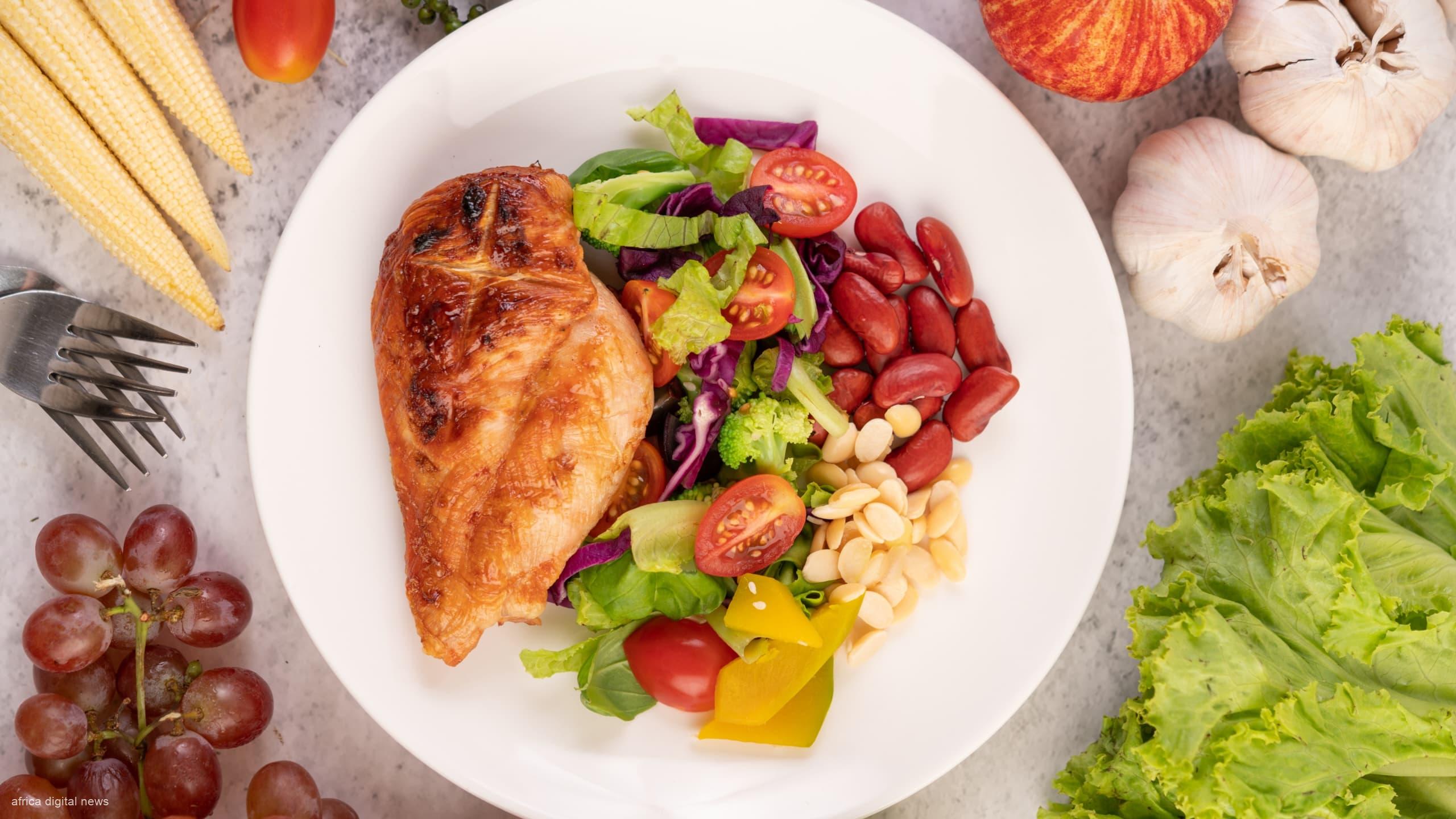In an era where cancer remains one of the most formidable health challenges, the pursuit of preventive strategies has never been more crucial. Amidst this quest, emerges a beacon of hope not from advanced pharmaceuticals or medical interventions, but from a source as ancient as life itself – our diet. ‘Healthy Eating Guide: Foods to Lower Cancer Risk’ embarks on a profound exploration of how certain foods, imbued with nature’s finest nutrients, hold the key to fortifying our body’s defenses against cancer.
At the forefront of this dietary arsenal are cruciferous vegetables – the unsung heroes in the realm of cancer prevention. Laden with a symphony of vitamins, minerals, and potent compounds like glucosinolates, these vegetables are not just food, but powerful agents that orchestrate a multifaceted attack against cancerous processes. Delving deeper, the guide unveils the intricate mechanisms by which these foods disrupt the pathways leading to cancer development, offering insights that intertwine modern science with nature’s wisdom.
Berries, with their vibrant hues and rich antioxidant profiles, emerge as another cornerstone of a cancer-preventive diet. Each berry type, from the lush blueberry to the tart raspberry, brings a unique composition of vitamins and flavonoids, waging a silent war against oxidative stress and inflammation – known accomplices in cancer’s insidious journey. This guide not only celebrates these natural gems but also backs up their roles with scientific evidence, illuminating their place in our daily diet.
The narrative then shifts to the humble yet mighty whole grains and legumes, often overshadowed in a world chasing novel dietary trends. Here, they are reinstated as vital players in cancer prevention, with their abundant fiber acting as a shield against one of the most prevalent cancers – colorectal cancer. The guide paints a vivid picture of how integrating these foods into daily meals contributes to a harmonious gut environment, crucial in warding off carcinogenic processes.
In an enchanting detour, the guide takes readers through the healing world of green tea, revealing how this ancient brew’s catechins are not mere constituents but powerful allies in inhibiting cancerous cell growth. Similarly, turmeric, the golden spice, is given its due reverence, not just as a culinary additive but as a bearer of curcumin – a compound whose anti-inflammatory prowess is equaled only by its potential in cancer prevention.
Read Also: African Medicine: Merging Tradition With Modern Care
As the guide approaches its culmination, it brings into focus fatty fish, nuts, and seeds, each group a repository of nutrients and healthy fats, building a robust case for their inclusion in a cancer-preventive diet. These sections are more than informational; they are a call to action, urging readers to rethink and reshape their dietary choices.
In conclusion, ‘Healthy Eating Guide: Foods to Lower Cancer Risk’ is not just a guide; it’s a journey through the landscapes of nutrition and health, a testament to the power of dietary choices in the fight against cancer. It goes beyond mere lists of foods, weaving a narrative that connects each food type to the larger tapestry of holistic health and cancer prevention. As readers traverse through its pages, they are not just informed but empowered – equipped with knowledge to make choices that don’t just satiate their palates but also fortify their health in the most fundamental battle against cancer.
The Role of Cruciferous Vegetables in Cancer Prevention
Cancer, a multifaceted and often daunting disease, remains one of the foremost health challenges of our time. Characterized by the uncontrolled growth and spread of abnormal cells, cancer can manifest in various forms, each with its unique complexities and challenges. Amidst the myriad of factors contributing to cancer development – genetic predisposition, environmental exposures, lifestyle choices – diet emerges as a significant, yet modifiable risk factor. A balanced diet, rich in nutrients and antioxidants, has been increasingly recognized for its role in cancer prevention. It serves not in isolation but as a critical part of a holistic approach to reducing cancer risk, which includes regular physical activity, maintaining a healthy weight, and avoiding harmful habits like smoking and excessive alcohol consumption.
Cruciferous Vegetables: Nature’s Anti-Cancer Arsenal
At the heart of cancer-preventive foods lie cruciferous vegetables – a group that includes broccoli, cauliflower, Brussels sprouts, and cabbage. These vegetables are more than just dietary staples; they are a powerhouse of essential nutrients, including vitamins C, E, K, and folate, as well as fiber, which collectively contribute to overall health and cancer prevention.
A key component in these vegetables is a group of sulfur-containing compounds known as glucosinolates. Upon consumption, glucosinolates are broken down into biologically active compounds such as indoles, nitriles, thiocyanates, and isothiocyanates. These compounds have been the focus of extensive research due to their potential anti-cancer properties. They are believed to work in several ways: by protecting cells from DNA damage, inactivating carcinogens, inducing cell death (apoptosis) in abnormal cells, and inhibiting tumor blood vessel formation (angiogenesis) and tumor migration (needed for metastasis).
For instance, studies have shown that sulforaphane, a compound derived from glucosinolates found in broccoli, possesses potent anti-cancer properties. It’s been observed to inhibit the proliferation of cancer cells and induce apoptosis in vitro and in animal models. Similarly, indole-3-carbinol, derived from glucosinolates in cruciferous vegetables, is noted for its role in modulating estrogen metabolism and preventing estrogen-driven cancers.
Epidemiological studies have reinforced the link between cruciferous vegetable consumption and reduced cancer risk. For example, research has indicated an inverse relationship between the intake of these vegetables and the risk of colorectal, lung, breast, and prostate cancers. This correlation highlights how the regular inclusion of cruciferous vegetables in one’s diet can be a key strategy in the prevention of various cancers.
The role of cruciferous vegetables in cancer prevention is significant and multifaceted. By integrating these vegetables into a balanced diet, alongside other healthful lifestyle practices, individuals can proactively contribute to reducing their risk of cancer. As research continues to unveil the complex interactions between diet and cancer, cruciferous vegetables stand out for their unique anti-cancer properties, underscoring the importance of dietary choices in the pursuit of health and well-being.
The Cancer-Preventive Power of Berries, Whole Grains, Legumes, and Green Tea
Berries: A Spectrum of Antioxidants Fighting Cancer
Berries, nature’s vibrant jewels, are not just delightful to the palate but are also dense in nutrients, particularly antioxidants. Each berry variety, be it blueberry, strawberry, raspberry, or blackberry, boasts a unique profile of antioxidants, including anthocyanins, quercetin, and vitamin C. These compounds are known for their ability to neutralize free radicals, thereby reducing oxidative stress and inflammation – two processes closely linked with cancer development.
Scientific studies have shown the remarkable impact of these antioxidants in combating cancer. For instance, research published in the ‘Journal of Agricultural and Food Chemistry’ found that anthocyanins in berries can inhibit the proliferation of cancer cells and induce apoptosis. Another study in the ‘Journal of Nutritional Biochemistry’ highlighted that the ellagic acid in strawberries and raspberries helps counteract carcinogens and reduce tumour growth.
Whole Grains: Fiber-Rich Allies in Cancer Prevention
Whole grains, including brown rice, barley, oats, and whole wheat, are integral to a diet aimed at reducing cancer risk, primarily due to their high fiber content. Dietary fiber aids in maintaining a healthy gut microbiome, ensures regular bowel movements, and helps achieve a feeling of fullness, which can contribute to maintaining a healthy weight. A significant body of research has linked high fiber intake, especially from whole grains, with a reduced risk of colorectal cancer. A study in the “British Journal of Cancer” found that an increased intake of whole grains and dietary fiber could significantly lower the risk of colorectal cancer.
Legumes: The Power of Plant-Based Proteins
Legumes, encompassing a wide variety of beans, lentils, and peas, are an excellent source of plant-based proteins, fiber, and various vitamins and minerals. These characteristics make legumes a valuable component of a cancer-preventive diet. They are particularly significant for those adopting vegetarian or vegan diets. The high fiber content of legumes contributes to digestive health, which is crucial in preventing colorectal cancer. Moreover, legumes contain compounds such as saponins and phytosterols, which have been studied for their potential anti-cancer properties.
Green Tea: The Elixir Rich in Catechins
Green tea, a widely consumed beverage, is esteemed for its high catechin content, particularly epigallocatechin-3-gallate (EGCG). These catechins are potent antioxidants that have been extensively studied for their cancer-preventive properties. Research indicates that green tea catechins can inhibit the growth of cancer cells and prevent the spread of tumors. A meta-analysis published in the “International Journal of Cancer” concluded that green tea consumption might be associated with a reduced risk of certain types of cancer, including breast and ovarian cancer.
In conclusion, the inclusion of berries, whole grains, legumes, and green tea in the diet offers a synergistic approach to cancer prevention. These foods, rich in antioxidants, fiber, and other beneficial compounds, work together to reduce the risk of various types of cancer. While they are not standalone solutions, their integration into a balanced diet, combined with other healthy lifestyle choices, can significantly contribute to the overall efforts in reducing cancer risk. As always, it is advisable to consult your healthcare professionals for personalised dietary advice, particularly for those with specific health conditions or dietary requirements.










